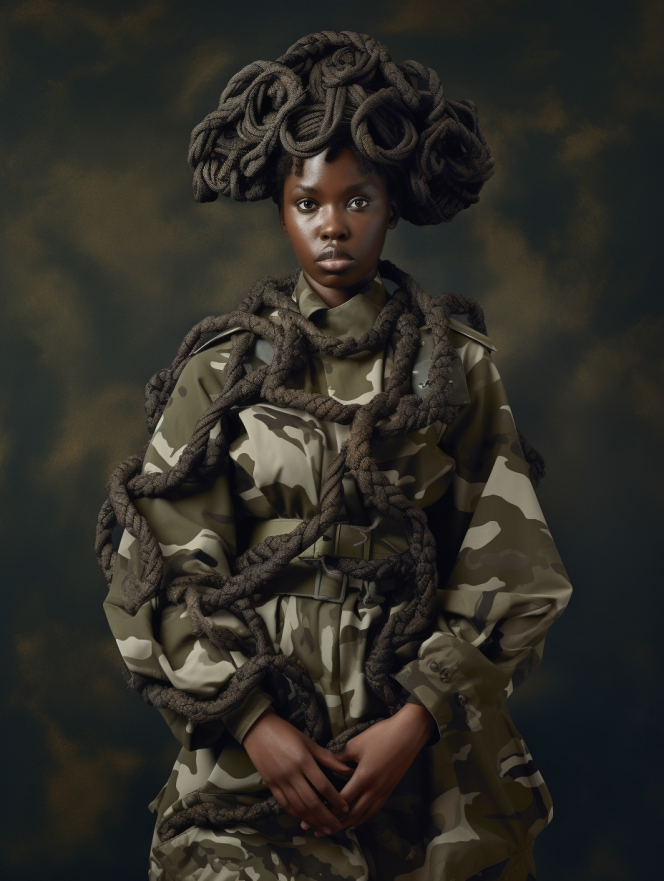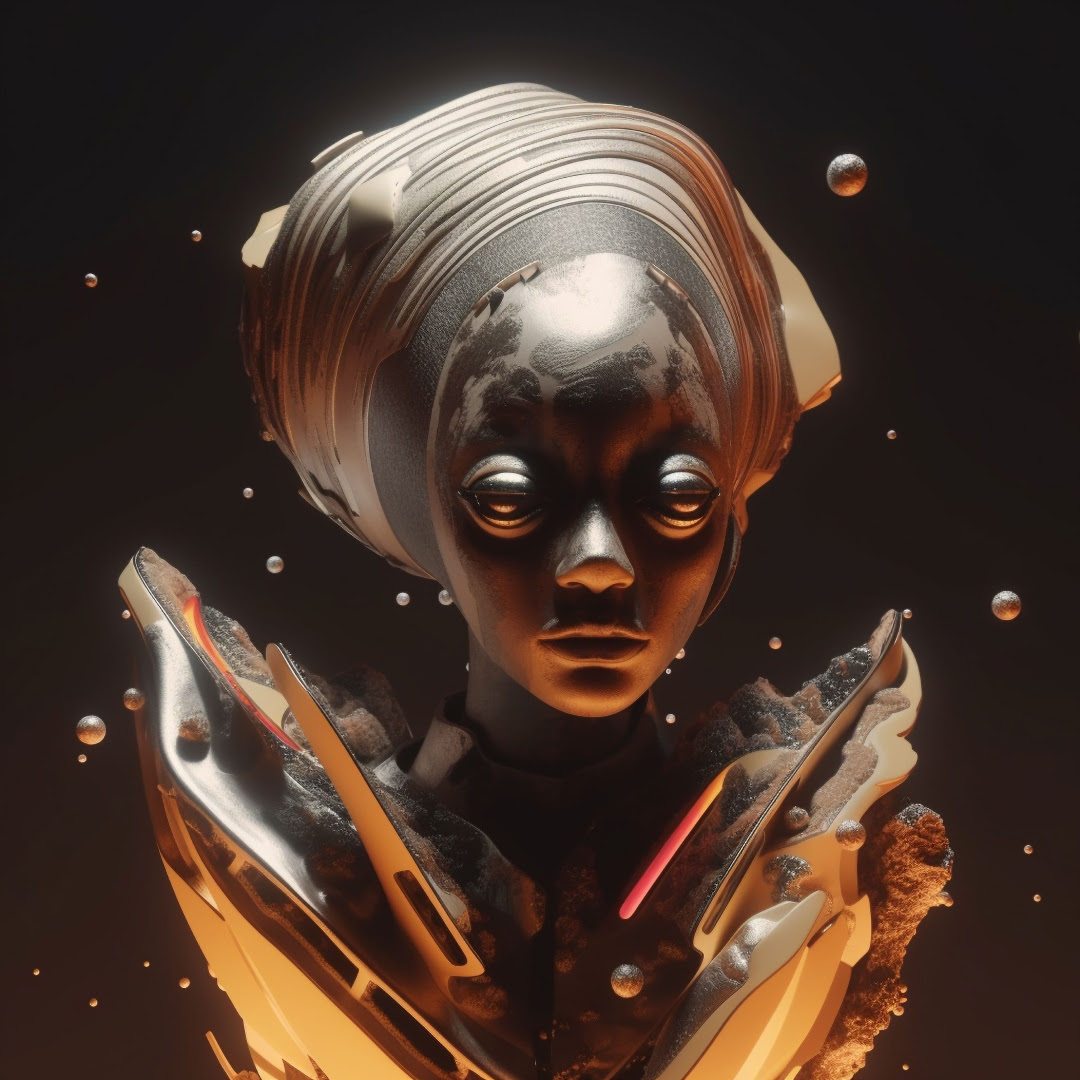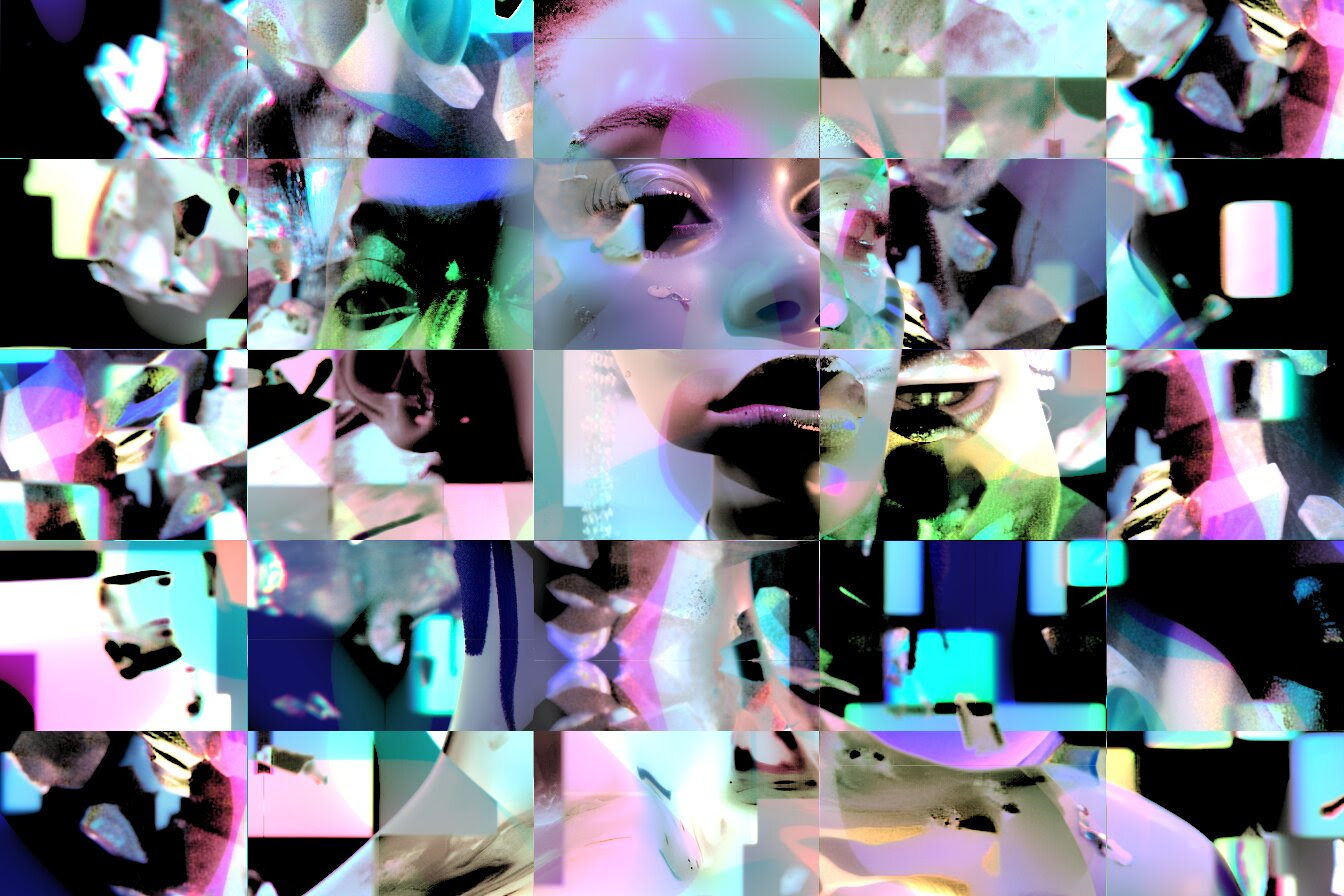NFT
Can synthetic intelligence see individuals of coloration? Senegalese artist Linda Dounia Rebeiz explores this thought-provoking query within the upcoming on-line exhibition she curated, IN/Seen, opening this Monday on Feral File.
It options 10 black artists, together with Dounia. The lineup showcases Jah., Serwah Attafuah, Adaeze Okaro, Minne Atairu, Linda Dounia, Zoe Osborne, Arclight, AFROSCOPE, Nygilia and Rayan Elnayal.
These artists share the widespread objective of shedding gentle on the biases of AI on the subject of representing individuals of coloration. “The biases of AI, the biases of the web, and the biases inherent in Western artwork historical past compound to create an setting the place individuals of coloration, together with black individuals, really feel both absent or misrepresented by AI,” Dounia informed Decrypt.
As a multidisciplinary artist, Dounia minted her first NFTs in 2021. Her work attracts inspiration from her private experiences as a lady rising up in Senegal, the place she witnessed vital transformations as a result of environmental change and globalization.
Introducing In/Seen, a bunch present inspecting the biases in AI, curated by Linda Dounia Rebeiz
June 12, 2023
14:00 UTC pic.twitter.com/5sRsO1J6LR— Feral File (@FeralFile) Could 25, 2023
Dounia makes use of AI in her work, collaborating with Generative Adversarial Networks (GANs) and coaching them utilizing her personal collected information from her setting and inventive observe.
“Whenever you enter a search time period like ‘human’ into AI platforms like Dall-E or Midjourney, the outcomes are skewed,” she stated. “You usually tend to discover pictures of white males. Nevertheless, once you seek for ‘black individual,’ the AI-generated outcomes are sometimes distorted, both within the facial options or physique proportions.”

“Perceived” by Serwah Attafuah
Dounia defined that AI steadily depends on stereotypes in its representations. “It is obvious from these outputs that AI does not absolutely perceive black individuals, their origins, or their contexts,” she stated.
These points are highlighted by the artworks featured within the exhibition. Whereas Dounia blurs the whole face as a rejection of AI’s output, Arclight incorporates the distortions into their items, leading to hazy and ill-defined pictures.
Then again, artists like Minne Atairu and Serwah Attafuah create aesthetically pleasing works with well-defined faces and lighting, however upon nearer inspection, inconsistencies within the illustration of hair turn out to be obvious.
Zoe Osborne makes use of filters to blur out inconsistencies, giving her portraits a classic look that represents her perspective on AI’s constancy in illustration. Jah takes a distinct strategy by embracing AI’s imperfections and using them to create surreal characters impressed by African masks and historical Egyptian apparel.

“The Idunnos, #45” by Jah
This activist strategy is strongly advocated by Linda Dounia, who believes that these questions should be raised. “AI just isn’t created in an apolitical vacuum,” stated Dounia. “It is individuals who create the algorithms, interfaces, collect information and use it to coach the algorithms. If these persons are not conscious of the problems, we won’t appropriate the bias.”
Moreover, launching an NFT exhibition exploring these points can be a method to unfold a message throughout the Web3 ecosystem, usually wrongly represented as an apolitical house. “I used to be somewhat apprehensive concerning the reactions after I began curating, however up to now, it has been well-received,” stated Dounia.
Furthermore, the artist emphasizes the significance of uplifting and empowering black artists, as they play an important position in addressing this situation. “If extra black artists start using the device to supply contextual references, they’re actively contributing information to rectify the issues,” she defined, noting that this collective effort can result in a extra inclusive illustration of cultural references in a democratic method.
For the primary 24 hours following the exhibition’s opening at 14:00 UTC on 12 June, collectors could have the chance to accumulate units together with the ten artworks showcased on the occasion for 0.55 ETH per set.
After this restricted interval, particular person paintings editions will likely be made out there for buy at 0.055 ETH per version.








